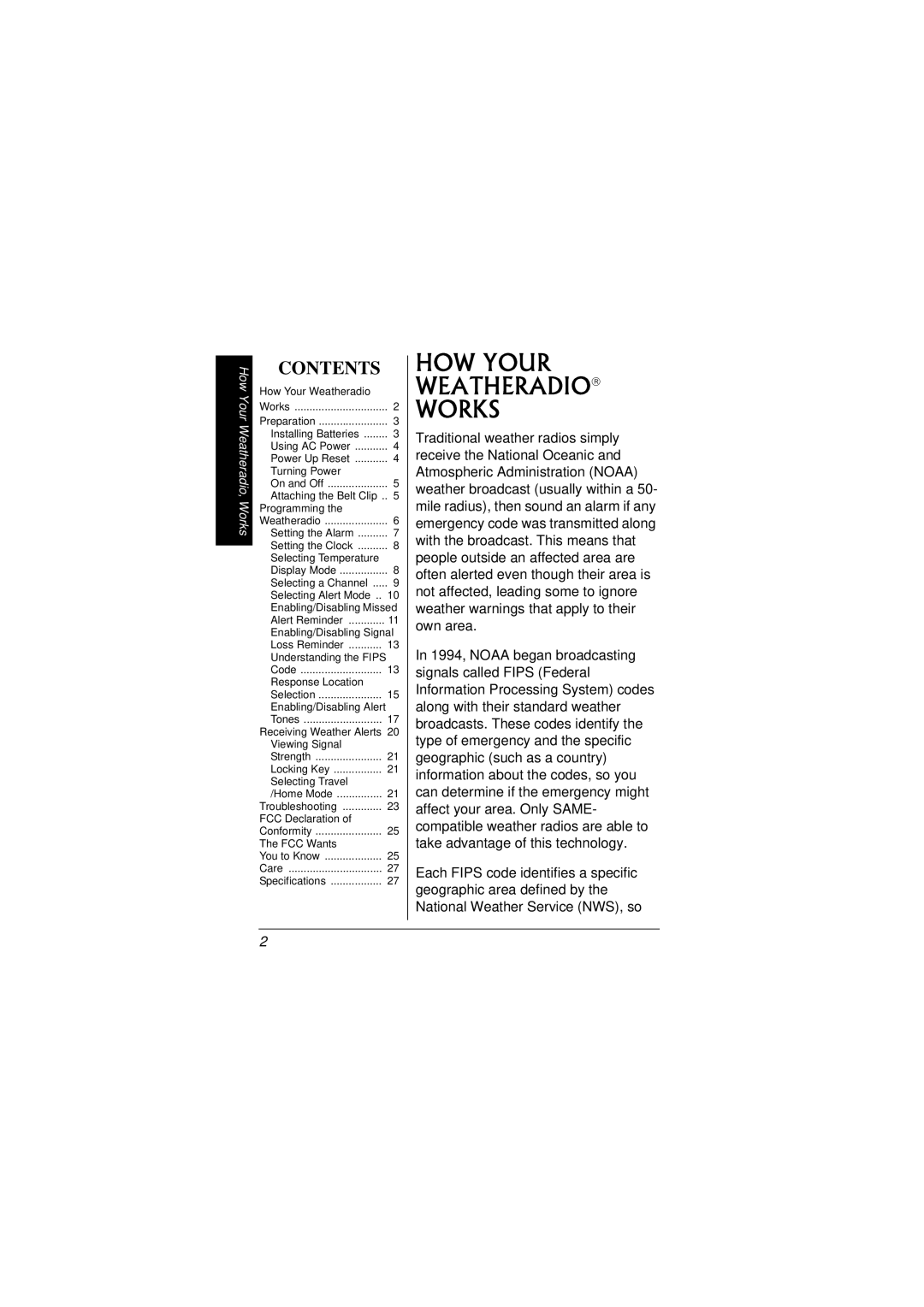
How Your Weatheradio‚ Works
CONTENTS |
|
How Your Weatheradio |
|
Works | 2 |
Preparation | 3 |
Installing Batteries | 3 |
Using AC Power | 4 |
Power Up Reset | 4 |
Turning Power |
|
On and Off | 5 |
Attaching the Belt Clip .. | 5 |
Programming the |
|
Weatheradio | 6 |
Setting the Alarm | 7 |
Setting the Clock | 8 |
Selecting Temperature |
|
Display Mode | 8 |
Selecting a Channel | 9 |
Selecting Alert Mode .. | 10 |
Enabling/Disabling Missed | |
Alert Reminder | 11 |
Enabling/Disabling Signal | |
Loss Reminder | 13 |
Understanding the FIPS |
|
Code | 13 |
Response Location |
|
Selection | 15 |
Enabling/Disabling Alert |
|
Tones | 17 |
Receiving Weather Alerts | 20 |
Viewing Signal |
|
Strength | 21 |
Locking Key | 21 |
Selecting Travel |
|
/Home Mode | 21 |
Troubleshooting | 23 |
FCC Declaration of |
|
Conformity | 25 |
The FCC Wants |
|
You to Know | 25 |
Care | 27 |
Specifications | 27 |
HOW YOUR WEATHERADIO
WORKS
Traditional weather radios simply receive the National Oceanic and Atmospheric Administration (NOAA) weather broadcast (usually within a 50- mile radius), then sound an alarm if any emergency code was transmitted along with the broadcast. This means that people outside an affected area are often alerted even though their area is not affected, leading some to ignore weather warnings that apply to their own area.
In 1994, NOAA began broadcasting signals called FIPS (Federal Information Processing System) codes along with their standard weather broadcasts. These codes identify the type of emergency and the specific geographic (such as a country) information about the codes, so you can determine if the emergency might affect your area. Only SAME- compatible weather radios are able to take advantage of this technology.
Each FIPS code identifies a specific geographic area defined by the National Weather Service (NWS), so
2
